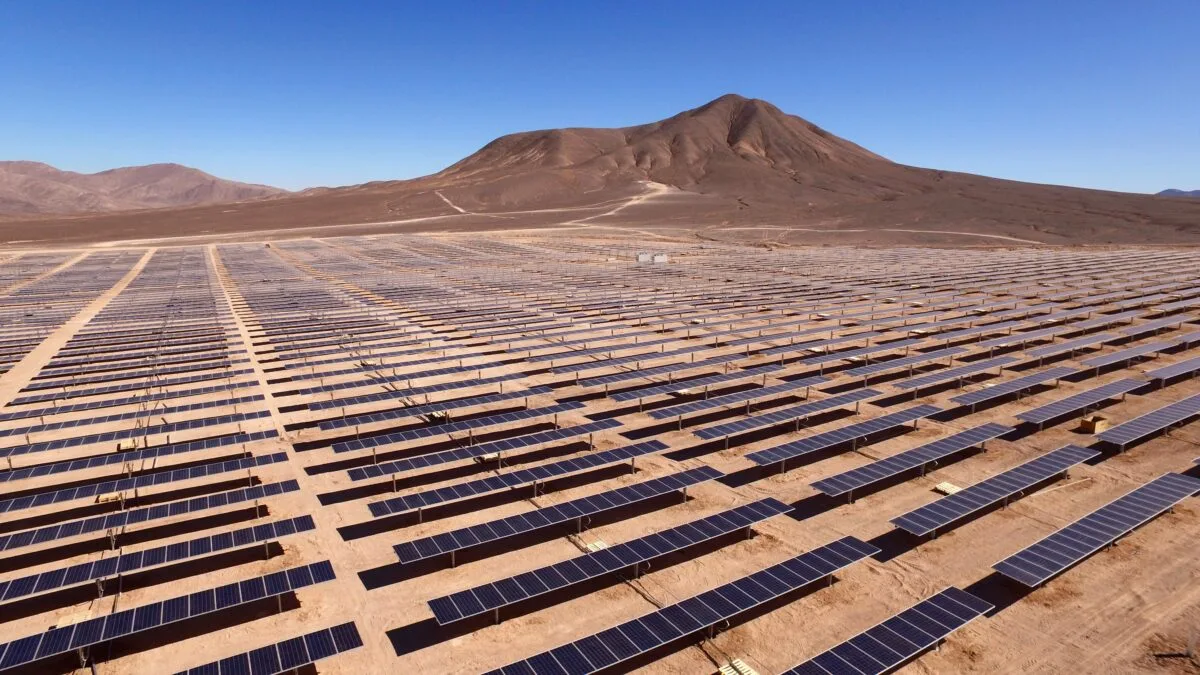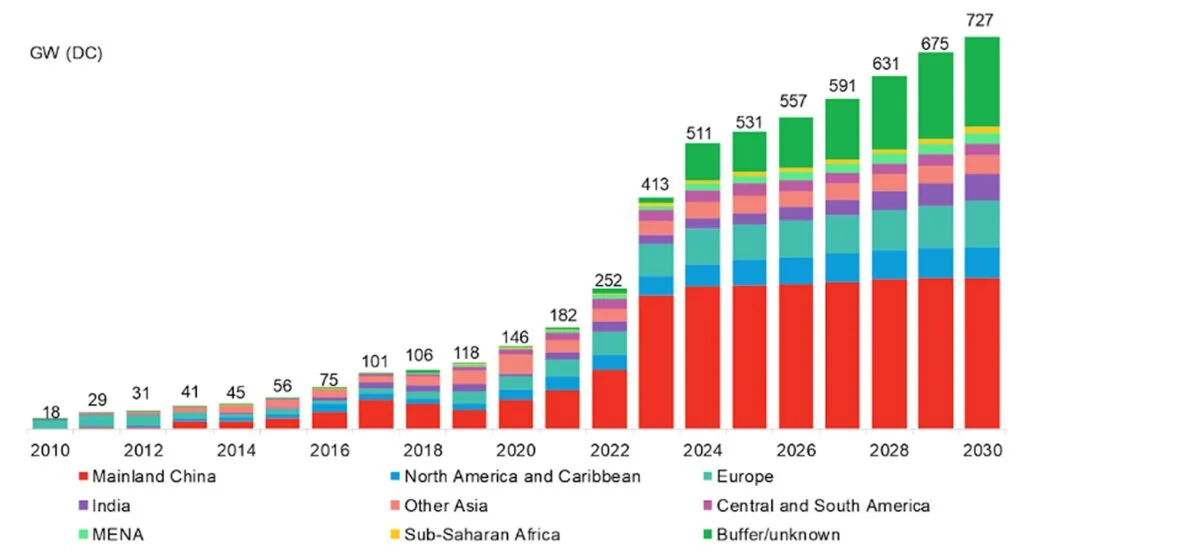- 5 Posts
- 27 Comments

 9·11 months ago
9·11 months agoThe other one is that a lot of people presume a house needs state of the art insulation, which obviously costs a lot to retrofit.
However in nearly all cases the old radiators work just fine with a heat pump as does the insulation. Underfloor heating and more insulation would make it more efficient, but that is often not worth the money, unless you do plan to do it anyway. When you redo the floors you can then add underfloor heating. Same for insulation, once you redo the roof or have to do work on the walls.

 4·11 months ago
4·11 months agoIt is a global study, so financing costs are different between countries. For example Chinas interest rate is at 10 year low right now. China also happens to be the largest market for renewables. In Europe fossil fuels are above average inflation numbers, so the high interest rate is made not that important as fossil fuels prices have risen that much faster. Indian prime interest rate is at about average right now. Japans interest rate is even negative right now.
Really it is USD which has a high interest rate right now, where it matters and it is bad.

 7·11 months ago
7·11 months agoActually large grids are another option as well and a really good one. Basically it is always sunny or windy somewhere and when you can transport the electricity you avoid storage. Also there are other types of none battery storage like hydro from reservoirs and pumped, chemical storage with hydrogen or something similar and well stuff like biomass.
It really starts to scale nicely with a bit of overcapacity, a bit of storage, a good grid and a lot of different types of renewables placed over a large area.

 5·11 months ago
5·11 months agoIt is just electricity generation, but it is also important to add, that it is the global average price of solar being 29% lower then the global average price of fossil fuel power generation. That means in good locations it would be even cheaper.
As for storage batteries are starting to kill gas power plant projects for cost reasons. That mainly happens in Europe with higher gas costs and emissions pricing, but there are some US examples as well. Both solar and batteries are rapidly becoming cheaper as well.

 6·11 months ago
6·11 months agoFor a long time offshore wind was just more expensive then onshore and the US had the space. It was only in the last decade that large scale offhsore projects started in Europe and China. That brought down costs and offshore wind turbines have become much bigger and more efficent, which makes them competitive.
The US also has the Jones Act, which only allows ships build in the US, own by Americans and staffed by Americans to transport freight between US ports. That makes building offshore wind farms very difficult as the US does not build those ships and lacks qualified personal.

 4·11 months ago
4·11 months agoThe big advantage of batteries is that they are not just able to balance the grid by providing more power, but also are able to take power out of the grid. They are able to do that extremly quickly as well. For those who do not know electricity grids fail if there is too much electricity or too little. With falling prices we are likely to see more of these even in largely fossil fuel based grids.

 1·11 months ago
1·11 months agoThe US advantages in manufactring are basicly a very well trained labour force, with a lot of top engineers and scientists, a massive local market and homebias. You can ship solar panels easily so the local market is not that important and home bias matters less for large company customers, who are the big buyers in solar. As for the well trained work force that really helps in designing the machines making solar panels, but for the manufacturing we are talking relativly cheap machines anybody can buy from China and a lot of not so skilled jobs with some medium skilled ones. Basicly every middle income country can compete in it. The only big advantage is in polysilicon, which requires cheap electricity. However other countries then the US have that as well.
I have no doubt that if the US governments wants to do it, the US is capable of doing it. However it is not obvious to me that anything, but making the tools and maybe polysilicon has a natural advantage in the US at all. You get cheaper workers abroad, who have the skills.

 3·11 months ago
3·11 months agoSolar panels are a cheap mass market based on scale and a relativly cheap workforce. It is all about scale and the US has no natural advantage in it, I can see. That is not to say it is a bad idea, but it propably is smarter to help poorer countries allied with the US to make them, like say Mexico and then import them.

 5·11 months ago
5·11 months agoIn 1980 gdp per capita of Portugal was lower then that of Ghana! They had massive economic growth since then and the country industrialized very late especially by European standards. That is why you see the electricity production more then double over that period. Hydro was basicly the big electricity source at the time, but there is limited potential. So thats why its share was going down.

 35·1 year ago
35·1 year agoTesla fanboys

 2·1 year ago
2·1 year agoAlso the turbines can be much larger. The blades have to be a single piece, to withstand the forces on it. That obviously causes problems transporting them on land. Modern offshore wind turbine blades are single pieces of over 100m, so longer then a football pitch. However that is not a problem offshore. The reason you want it is that with blade length the energy produced grows exponentially.

 2·1 year ago
2·1 year agoMost of that is fine during a dunkelflaute. The only really big issue is not having enough generating capacity, but even that likely works out. The most fuel generation during a single week last year was 24,302GWh so 144GW running throu. Sweden and Norway can generate 49GW in hydro at full power. Even the best weeks still have over 12TWh of fossil fuele generation in the EU, so that certainly goes a long way to solving the problem of dunkelflaute.
But you are right, most of the year smaller storages to cover a night or so, is all you need. So you still want some TWh of battery and pumped hydro storage. That preserves hydro storage and is needed to balance the grid. Biomass is also worth a look for long term storage.

 4·1 year ago
4·1 year agoIt is absolutly the storage capacity at one point. . As in the first link:
Norway has more than 1000 hydropower storage reservoirs with a total capacity of more than 87 TWh. The 30 largest reservoirs provide about half the storage capacity. Total reservoir capacity corresponds to 70 % of annual Norwegian electricity consumption.
That is not that crazy. It just means that less then 10% of global hydro reservoir storage is in two European countries, with a lot of water and mountains. Hydro is by far the biggest storage capacity we have. To put it in the words of the iea and globally speaking:
The reservoirs of all existing conventional hydropower plants combined can store a total of 1 500 terawatt-hours (TWh) of electrical energy in one full cycle – the equivalent of almost half of the European Union’s current annual electricity demand. This is about 170 times more energy than the global fleet of pumped storage hydropower plants can hold today – and almost 2 200 times more than all battery capacity, including electric vehicles.
Source: https://www.iea.org/reports/hydropower-special-market-report/executive-summary

 2·1 year ago
2·1 year agoSorry, I mean TWh and not GWh. For Norway it is 87TWh as here: https://energifaktanorge.no/en/norsk-energiforsyning/kraftproduksjon/
and for Sweden as well: https://www.researchgate.net/publication/228782162_A_Nordic_energy_market_under_stress#pf2
So yes it is a thousand times more, my bad for mixing up units.

 22·1 year ago
22·1 year agoRight now Sweden and Norway have 118GWh of hydro storage and there is more in other EU countries. That alone is enough to power the EU for two weeks or so. But even that is not entirly needed as Europe is large and diverse enough geographically to have different weather in different countries. So power can still be moved. Even on the worst day of last year wind and solar were still able to produce 8.5% of the EUs electricity production so 37% of average levels.

 21·1 year ago
21·1 year agoThat was exactly my point, you do not need a global grid for this to work a continent sized one already does a great job. That was why I used the EU as an example. As for seasonal storage the worst month last year had 42.8% renewables, which was March, the best was February so a month earlier with 60.0%. The average was 49.7%. So we are talking 20% up or down. That is also true when you just look at wind and solar. Average was 47.15GWh and the worst month was 40.97GWh and the best 59.00GWh. So again fairly even distribution over the entire year. So no need for seasonal storage, unless you have something super cheap.
That is real world data and not some crazy stuff. You basicly just have to overbuilt by 50% and add a days worth of storage to the EU grid to work and the ability to move around electricity.
Also I am talking about hydro power, which per wiki only makes up 16% of global generation. That has storage capabilities built in current reservoir power plants. https://en.wikipedia.org/wiki/Hydroelectricity#Properties

 31·1 year ago
31·1 year agoFor 1. grid size matters a lot. It is always sunny and/or windy somewhwere, so if you can transport the electricity with a good enough grid you can cut down on storage. In the EU the lowest share of renewables on a single day was 23% of electricity production of what over the entire year was 37.6%. 8.3% of total production on the worst day was from solar and wind the rest mainly hydro and biomass. Btw that was 06/12/2022.
Point is that seasonal electricty storage for renewables grid is absolutly not needed and for a continetal sized grid you mostly run to about a days worth of storage and some smart grid management. We also already have hydro power reservoirs, which have some truely massive storage capacity, if used not for baseload, but for dispatch.

 4·1 year ago
4·1 year agoNiger supplied 20% of Frances uranium over the last ten years. The coup is not a threat to Frances electricity supply at all as France can buy urnanium ore from others countries with ease. The problem is that Russia has nearly half of the global uranium enrichment capacity and we all have seen that Russia should not be trusted when it comes to energy security.






The article is from August/September 2012
The issue is that ICs just suck badly. So badly that carrying around half a ton of batteries still makes EVs much more efficent. that is not even looking at how petrol is made, which btw also requires electricity.